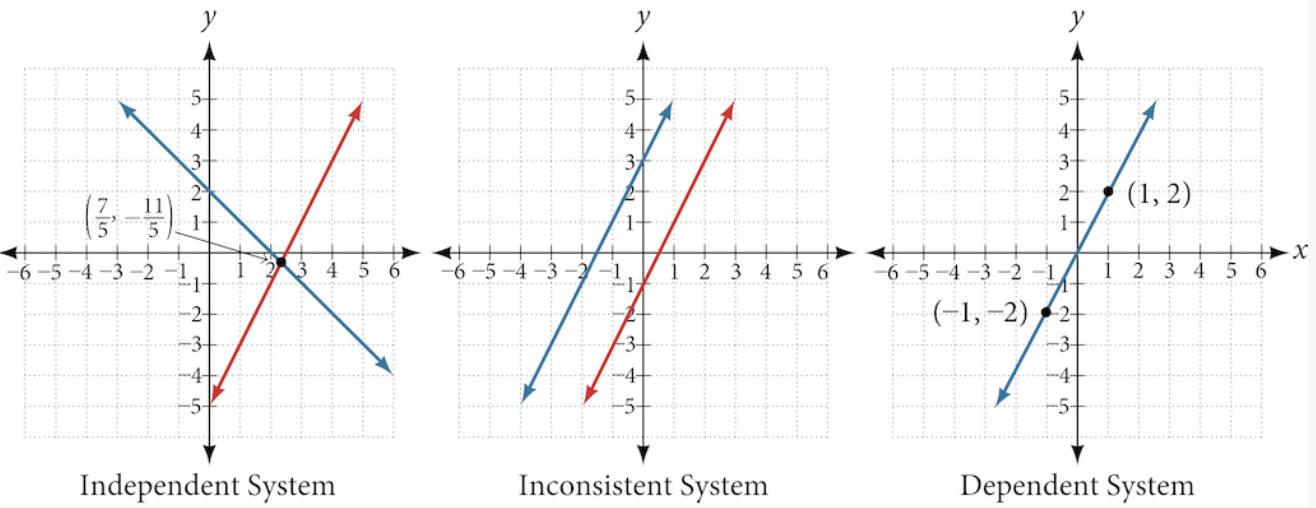- Find solutions to systems of equations by drawing their graphs and finding where they cross
- Solve systems of equations by replacing one variable with an expression from another equation
- Solve systems of equations by adding equations to eliminate a variable
- Figure out when systems of equations have no solution or infinitely many solutions
Solutions of Systems Overview
A system of linear equations consists of two or more linear equations made up of two or more variables such that all equations in the system are considered simultaneously. To find the unique solution to a system of linear equations, we must find a numerical value for each variable in the system that will satisfy all equations in the system at the same time. Some linear systems may not have a solution and others may have an infinite number of solutions. In order for a linear system to have a unique solution, there must be at least as many equations as there are variables. Even so, this does not guarantee a unique solution.
system of linear equations
A system of linear equations consists of two or more linear equations made up of two or more variables such that all equations in the system are considered simultaneously.
We will start by looking at systems of linear equations in two variables, which consist of two equations that contain two different variables.
[latex]\begin{align}2x+y&=15\\[1mm] 3x-y&=5\end{align}[/latex]
The solution to a system of linear equations in two variables is any ordered pair that satisfies each equation independently. In this example, the ordered pair [latex](4,7)[/latex] is the solution to the system of linear equations.
Analysis of the Solution
We can verify the solution by substituting the values into each equation to see if the ordered pair satisfies both equations.
[latex]\begin{align}2\left(4\right)+\left(7\right)&=15 &&\text{True} \\[1mm] 3\left(4\right)-\left(7\right)&=5 &&\text{True} \end{align}[/latex]
In addition to considering the number of equations and variables, we can categorize systems of linear equations by the number of solutions.
types of linear systems
There are three types of systems of linear equations in two variables, and three types of solutions.
- An independent system has exactly one solution pair [latex](x,y)[/latex]. The point where the two lines intersect is the only solution.
- An inconsistent system has no solution. Notice that the two lines are parallel and will never intersect.
- A dependent system has infinitely many solutions. The lines are coincident. They are the same line, so every coordinate pair on the line is a solution to both equations.

- Substitute the ordered pair into each equation in the system.
- Determine whether true statements result from the substitution in both equations; if so, the ordered pair is a solution.
[latex]\begin{align}x+3y&=8\\ 2x-9&=y \end{align}[/latex]
